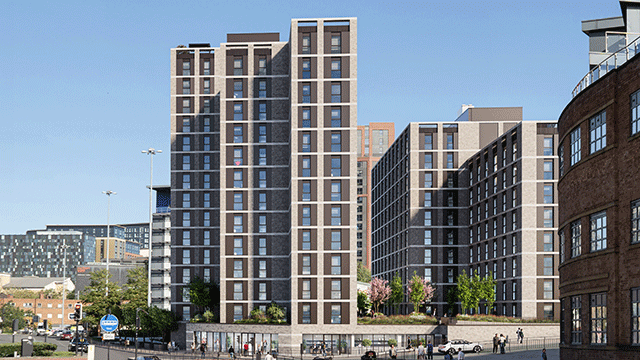Rating – Valuation – Statutory hypothesis – Appellant freeholder appealing against decision of Valuation Tribunal for England determining rateable value of high street store – Whether lease of appeal building and comparable transactions showing rental values purely nominal – Whether evidence of general demand – Appeal allowed
The appellant was the freeholder owner of the four-storey former Marks and Spencer store at 20-21, High Street, Kidderminster (the appeal building). The development of an out-of-town retail park (Weavers Wharf) had resulted in many of the town’s larger retailers relocating to it from the town centre.
The appeal property formed the ground floor and basement of the building. The first and second floors were the subject of a separate rating assessment that was not before tribunal. The four floors covered by the two assessments were let together by the appellant to a retailer, who shared occupation with other retailers.
The upper floors (within the appeal building but not within the appeal property) were linked to the ground floor by an internal staircase. But they were, at the material day of 1 April 2017, in poor repair. The front section of the first floor, at least in recent times, was sealed off apparently owing to asbestos being present, and the second floor was not accessible. They were assessed at £22,250 RV, in both the 2010 and 2017 rating lists.
The appellant appealed against a decision of the Valuation Tribunal for England (VTE) that the 2017 List rateable value of the appeal property be reduced from the compiled list assessment of £92,000 and instead be entered into the rating list at £57,000 RV with effect from 1 April 2017.
The appellant argued that the effect of both Weavers Wharf and general market decline had been such that there was little if any demand from mainstream retailers for large town centre retail properties: Properly analysed, the lease of the appeal property and that of a small number of comparable transactions, showed that rental values were purely nominal.
Held: The appeal was allowed.
(1) If there was a rent passing on the subject hereditament at the antecedent valuation date (AVD), that would ordinarily be a good starting point from which to assess rateable value. But here the rent was not only of the hereditament, but of the whole of the appeal building.
Although it could probably be taken that the hypothetical landlord of the appeal property was that of the appeal building, the same could not be said for the hypothetical tenant, who could not be assumed to be the same tenant as one taking a lease of the whole building after adjustments were made to his or her assumed liabilities.
The leases significantly departed from the terms of the notional letting under the rating hypothesis. The tenant had no security of tenure as the leases were contracted out of the relevant provisions of the Landlord and Tenant Act 1954, and the landlord could recover possession on one month’s notice. The tenant’s ability to assign the lease was prohibited, and subletting was extremely restricted. It was therefore debatable whether the tenant could assume a letting from year to year with a reasonable prospect of continuance as required under the rating hypothesis.
(2) Under the rating hypothesis it had to be assumed that a letting took place. There was no question that, maybe unlike the appeal building, the appeal property had reached the end of its economic life. The question was whether there was sufficient evidence of general demand to indicate that the hypothetical tenant would pay a positive rent, and if so at what level. In principle, if there were no general demand, a nominal rateable value might theoretically be appropriate.
Even in a “saturated” market the rating hypothesis assumed a willing tenant, and by implication one who was sufficiently interested to enter into negotiations to agree a rent on the statutory basis. As to the level of that rent, there was no reason why, in the absence of other material evidence, it should not be assessed by reference to general demand derived from occupation of other properties with similar characteristics: Hewitt (VO) v Telereal Trillium [2019] UKSC 23; [2019] EGLR 28 applied.
In the present case, there was a small number of nearby properties which had reasonably similar characteristics to the appeal property.
(3) The main dispute was in respect of the dilapidations waiver. There was a schedule of condition in place which would probably reduce the tenant’s dilapidations liability. The tribunal only had the landlord’s view as to the capital value of the works, but nothing from the tenant’s representative to counter it. Even if the capital value was right, it was likely that the tenant could resist a claim for dilapidations, relying on section 18 of the Landlord and Tenant Act 1927, especially as, on the appellant’s case, rents were static and the market sluggish, because it was questionable as to the effect on the landlord’s reversion.
Standing back, there was no evidence of a letting that was on sufficiently conventional terms to not require adjustment of varying degrees of effort, to convert them to the statutory hypothesis. All three lettings involved significant inducements, be they rent review caps, exclusivity clauses, service charges included, dilapidations waived or rent-free periods. But there was evidence of positive rents being paid, even after those inducements and that there was general demand for large stores.
The deconstruction of the headline rent of the appeal building to ascertain the net rental of the appeal property was not persuasive. In the light of an analysis of the limited evidence, a fair approach was to value the appeal property by applying £11 per sq m, resulting in a rateable value of £17,776 but say £17,750 RV, with effect from 1 April 2017.
Luke Wilcox (instructed by Simon Alexander Consulting) appeared for the appellant; Admas Habteslasie (instructed by HMRC solicitor) appeared for the respondent.
Eileen O’Grady, barrister
Click here to read a transcript of Ballcroft Estates Ltd v Virk (VO)








